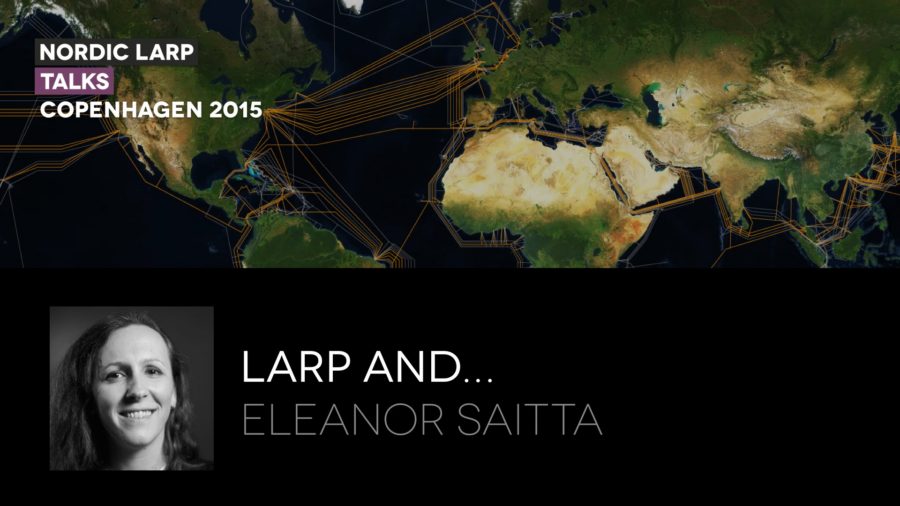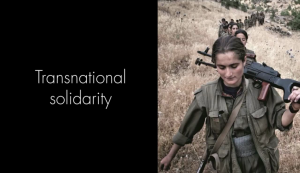I’m going talk to you guys about larp and. Larp and a whole lot of other things. Because I think the most interesting things about larp are maybe not actually larp itself, but when larp meets a whole bunch of the rest of the world.
So, the 21st century will be defined by sociotechnical infrastructural systems. All of these great big networks of things and people and code, and patterns and practices and performances that make the world do what it actually does. And you know, this is the shipping system, right. The global transportation system that we use to get basically all of our stuff. Everything that you’re touching right now almost certainly went in a container at some point.
However, this system has all sorts of unintended impacts that we don’t really know about. For instance, all the pollution that comes from ship breaking. Global warming that comes from the CO2 output of these massive ships. We built the Internet, which is an amazing system that started from this Swedish telephone exchange, from from origins like that.

And then went all over the place. Through Google Glass, right. Google glasses are a fascinating system. It has all sorts of weird unintentional social effects. If you’ve ever actually been in the same room as one, they’re really creepy.
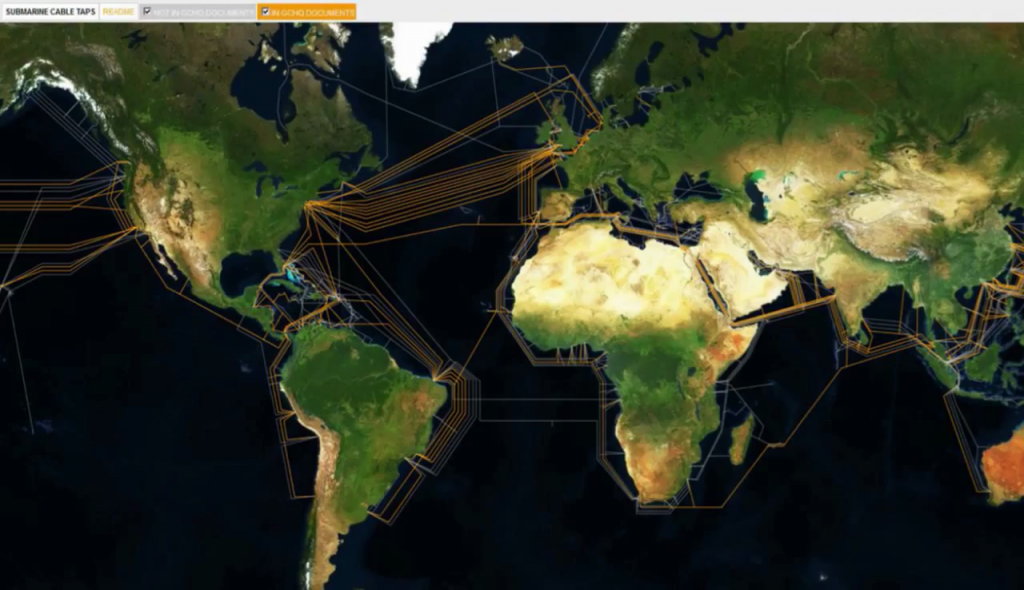
Ingrid Burrington, Submarine Cable Taps
This is a map of of global cables. All of the ones in orange are surveilled by these guys. So, we didn’t intend that when we built the Internet. If we want to understand these systems, we need to start taking them apart and reading them and writing them.
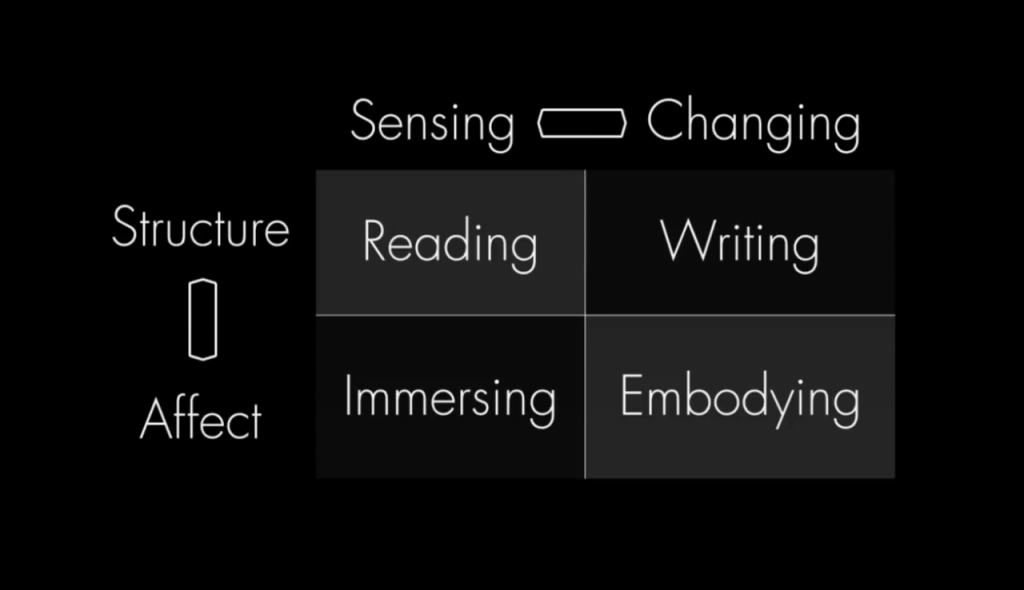
When we interact with systems, we look at them in a couple of different ways. We sense systems, and we change systems. We look at their structure, and we look at their affect.
Now, we have a lot of tools for reading systems. This is the world of systems modeling. It’s very boring. We won’t talk about it. Well, it’s really fascinating, but it’s long. When we want to write systems, we do all sorts of things. We do structural politics, we look at regulatory domains and soft infrastructure. We nudge people. We do cultural manipulation and propaganda and bribery and blah blah blah blah blah blah.

Photo: Noah Berger
So, let’s talk about the other half, because this is the half that larp can actually help with. This is the half that we’re really not very good at right now. Immersion. Immersion is a thing that we talk about a lot in larps. Let’s say that you want to understand radical history. You want to understand the political traditions in different places. This is a thing that we can build games that teach, and teach quite well. Yes, there are limits to what you can do in terms of anthropological understanding of different situations. However, especially when you’re in cultures fairly close to yours, you can get close enough. You can get enough of an understanding of what a specific piece of history meant that it gives you a completely different feeling for modern political struggles. And this can be separated in time or in space. That photo is from some of the traffic stoppages that have happened in Oakland right now over the Black Lives Matter protests.
- Colin Delfosse, “Les Amazones du PKK”
We can look at transnational solidarity. How do we break down national borders. This is more of that kind of solidarity across space. That’s from the PKK regiments in Kobani. We can understand different kinds of oppressions and different kinds of social structures. And a lot of the immersion that I’m talking about right now is obviously politically loaded in a certain direction. That’s coming from my politics, but I think that this is the stuff which is buried in the structural readings. All of the structure readings, if you want to understand what it’s like to be rich, the structural readings are going to tell you about that. They’re not going to tell you about what it means to be poor, because the structural readings that exist are mostly created in the service of the rich.
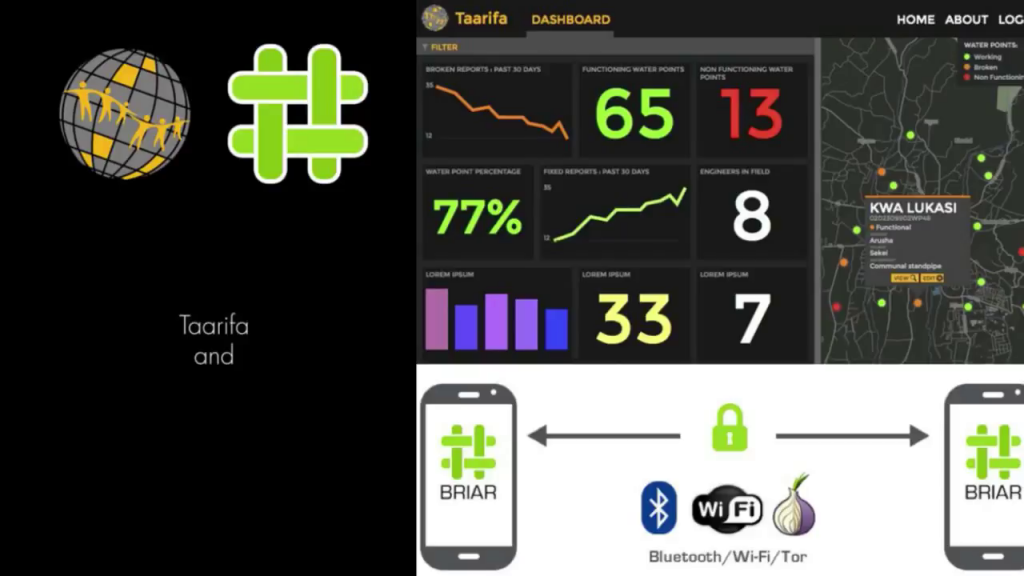
So, let’s say we want to talk about writing. Let’s say we want to talk about the changing systems. Now we’re talking about prototyping. I could give an hour talk on this slide, but I’m not going to. These are two systems Taarifa and Briar. Taarifa is a really fascinating system for managing water points in— It’s being used in Dar es Salaam right now. It can be used for a lot of different things. It’s basically a reporting management system so someone can report a failure in the field and walk through this whole chain of getting something fixed. Now, one of the things we’re working with them on Briar is building a decentralized version of this system that doesn’t have a traditional control structure in the middle of it.
What does that mean, politically? What happens politically and culturally to a community, if you don’t have a central water management bureau? How do you write new scripts to understand that? Well, that’s a thing that we can game. That’s a thing that we can test in a game before we deploy that in somebody’s real water system. Which might be kind of nice because unintended consequences.
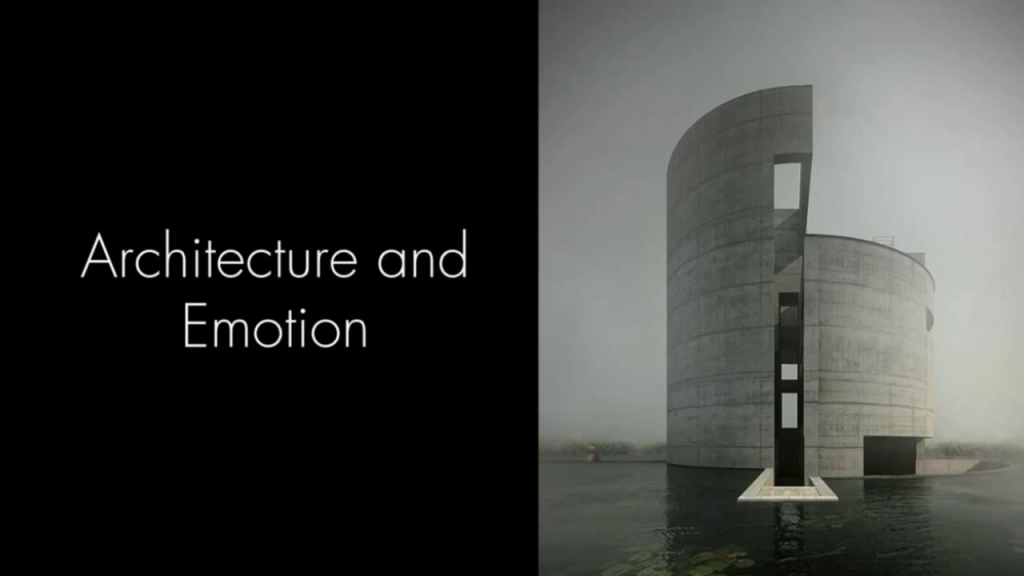
Image: Cold House
Architecture is another fascinating area for larp. Modern architecture has a lot of really great a discourse around it, just about everything but emotion. But architects are actually really bad at understanding the emotional impact of buildings, because they have basically no language for talking about it. This is something that I would really like to bring some of our great language for affect over to the architecture world, and maybe we can bring some of their interesting language for talking about time and space into the larp world.
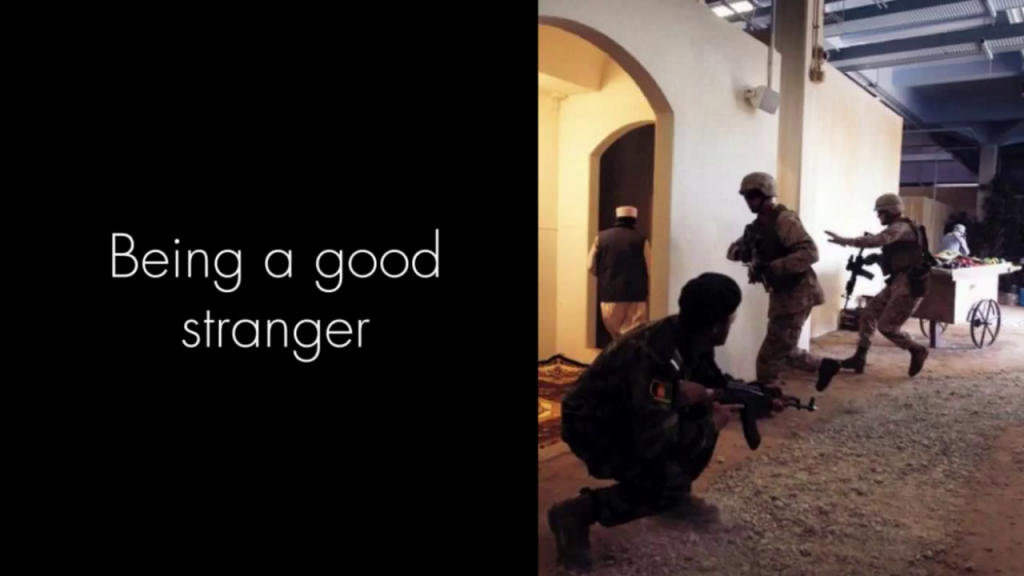
Being a good stranger. This is a larp. This is larp that’s run everyday. It’s a one-day long game. It’s run for every new US Marine. It teaches them what DoD thinks is how to be a good stranger. You’ve just thrown a breaching grenade through the wall of somebody’s living room, and now you go in and point a gun at them and try to de-escalate the situation. [audience laughter]
I’m not going to say that this is an easy larp. This might even be playing to lose. But it’s a really fascinating game, and if you’re going to insist on throwing a breaching grenade through the wall and jumping into the room with a gun, maybe you should figure out what comes next and try to understand and think about that and learn it. It’s not easy, but you know, there we go. So, these are things that we can embody.
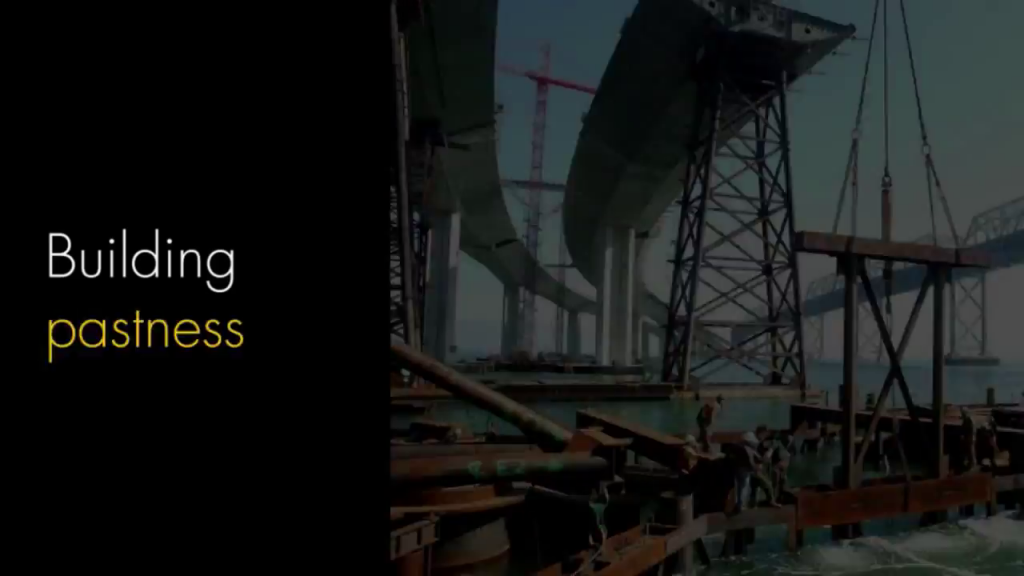
There’s a whole toolkit that we have here that I’m just going to burn through, because we don’t have that much time and this is a really interesting one-hour talk. However, we can build things in games. This is how we do a lot of the embodying. We can build pastness. This is how you understand the weight of historical tradition and what it actually means.
We can build belief. This is how you say, “Okay, either I believe at this thing works in the world that doesn’t work right now.” Or, “I want to arm see how this system feels if I believe something else about the world.” So, we can tweak our perception of reality in really interesting ways.
We can build rituals, right. And this is really important, because all of these big sociotechnical systems have performances and ceremonies associated with them. And in a lot of cases we don’t know what those are going to be when we build the system. We do a bunch of technical work, and then we throw it in the field and something…happens, we don’t know what. Maybe it’s good, maybe it’s bad. Who knows. So, we can build rituals this way.
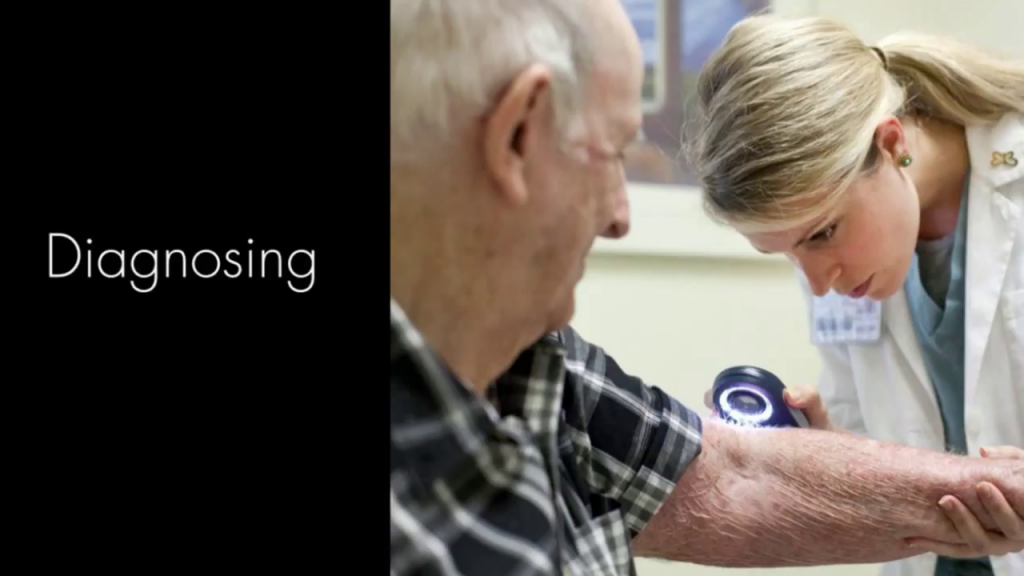
We can also do a lot of different kinds of diagnosis work through larp, and this is where it’s really interesting. This is shades of Eirik’s talk from last year. I don’t know if larp matters, but larp design definitely matters. We can diagnose power structures. Larp is an incredibly sophisticated tool, and larp design is an incredibly sophisticated tool for reading the power structures out of a social situation and writing the power structures that we’d like.
We can diagnose affect. Being in a character and embodying yourself into a situation gives you a much finer sense for what a system means emotionally. Which is the big thing that we have problems writing, or you have problems understanding right now otherwise.
We can diagnose viability. So, you create a bunch of things, you perform them, you do all of this stuff. And at the end of the day you realize you know, this is never going to work. No one’s ever going to do this. This is ridiculous, right. This is not something that we’re actually very good at doing right now before we go spend billions of dollars on deploying systems. Which seems kind of silly. Maybe we should use some better tools. Thank you.
Further Reference
Overview blog post for the 2015 Nordic Larp Talks, and for this presentation
